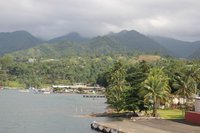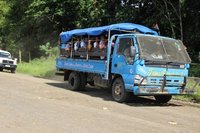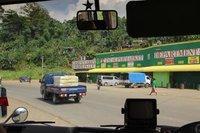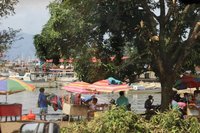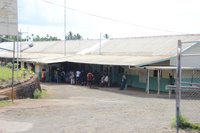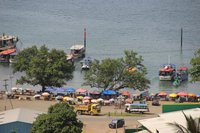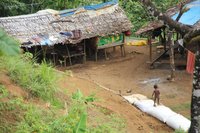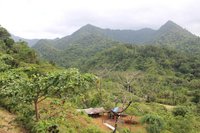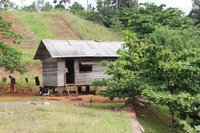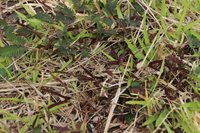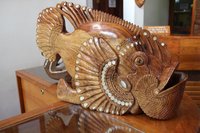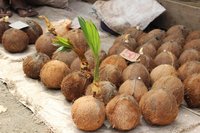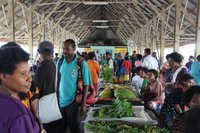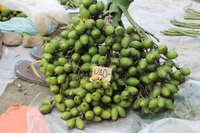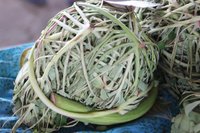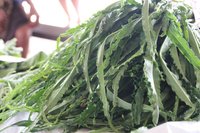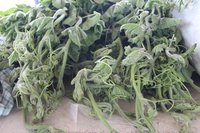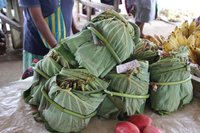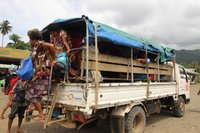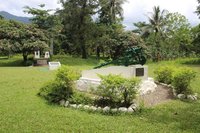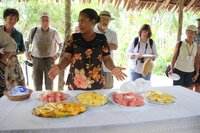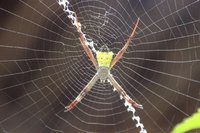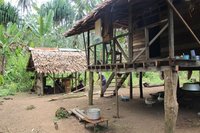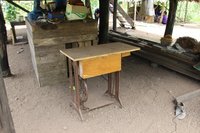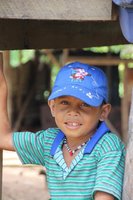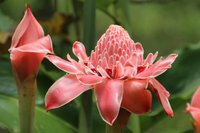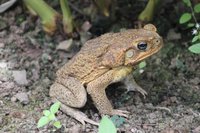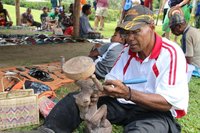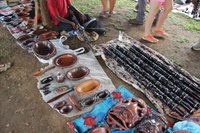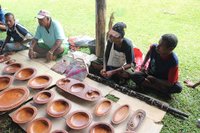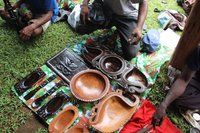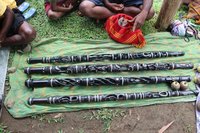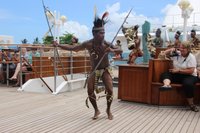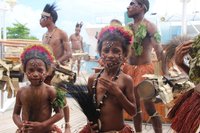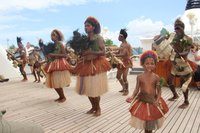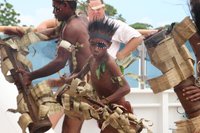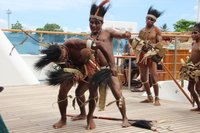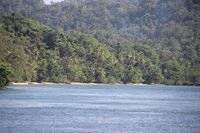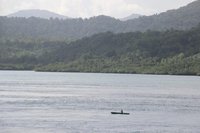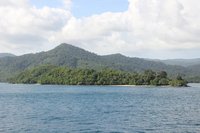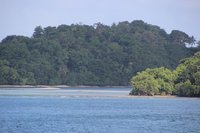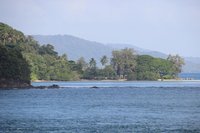| ||||||||||||||||||||||||||||||||||||||||||||||||||
 |
||||||||||||||||||||||||||||||||||||||||||||||||||
|
Alotau, Milne Bay Alotau, the capital of Milne Bay Province
since 1966, is located at the south eastern
tip of Papua New Guinea. The Province includes
600 islands of which 160 are inhabited, with
54 languages spoken. The rugged Owen Stanley
Ranges to the west isolate Alotau, and there
is no road access to the rest of the country,
hence there are not many squatters from other
provinces to cause trouble. Milne Bay is
probably now the quietest province in PNG.
There is not much inward passenger shipping
as it's not ‘on the way’
to anywhere else – and the locals like
it that way. Many of the population of around 10,000 rely
on the sea for their livelihood, and as a
result, the busy harbour is the focal point
of the town. There’s an array of colourful
vessels ranging from tiny canoes to dive
and charter boats. Alotau is one of the few
places in Papua New Guinea to have a taxi
service. Outside of the town there is no
electricity – people rely on generators,
batteries or solar. Australian military history is linked to this area. In August 1942, the battle for Gurney Airstrip saw the Australians win the first significant land-based victory over Japanese forces in the Pacific. It was the first time that the Australian Army and Airforce had fought side by side in the war and was also the first time that the US forces had fought in Papua or New Guinea. Aircraft, vehicles and tank remnants of the battle are still being discovered.
We set off on the Alotau Highlights Tour that covered both historical and cultural aspects of the area. We drove around Milne Bay to the beaches of Ahioma where war barge wrecks still remain, albeit sunken in the sea. Then passed the hospital to Toptown Lookout to see a panoramic view of Milne Bay. We visited the Turnbull War Memorial that was the site of the No.3 airstrip during WWII. Then back to Alotau town centre and market and the recently completed Battle of Milne Bay War Memorial that has a detailed description of the 1942 battle. After our last minute shopping for Trobriand carved bowls, clay pots, grass skirts and woven baskets, we boarded the ship. On board was a final cultural performance and then we set off along the China Straits and into the Coral Sea. We passed many islands in the China Straits including the 59 acres Samarai which was the Colonial headquarters until 1968 when it was abandoned due to limited space for expansion and lack of water supply. There are many caves around the China Straits full of heads from the head-hunters. When the missionaries came people were relieved to turn to Christianity to stop the tribal fighting. | ||||||||||||||||||||||||||||||||||||||||||||||||||
 |
||||||||||||||||||||||||||||||||||||||||||||||||||













